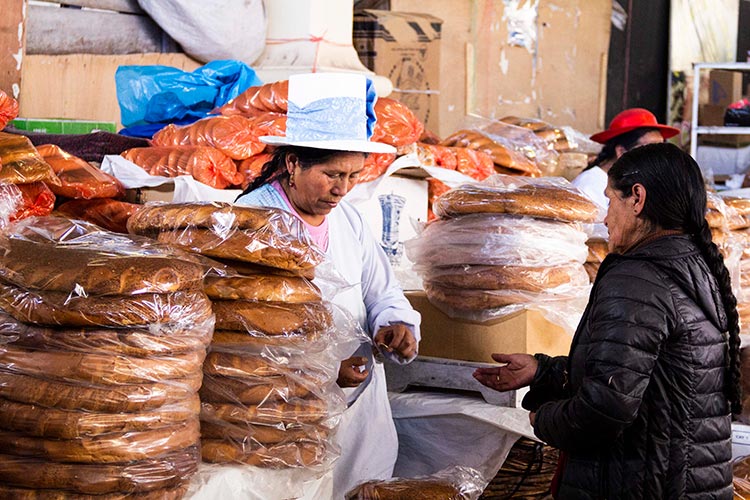With its rich and unique spices, exceptional ingredients, and deep traditions, it’s no surprise that Peruvian cuisine is booming worldwide. These days you can find Peruvian restaurants in most parts of the world, enjoy a Peru-style ceviche or lomo saltado, and even drink some chicha morada (purple corn drink). Along with these tasty dishes and drinks, Peru also has a rich tradition of baking bread.
Bread, or pan, is a staple in the typical Peruvian diet. It may be consumed both for breakfast and dinner (known as lonche in the Sacred Valley), and the type of bread that is consumed varies widely from town to town. Some towns make their claim to fame specifically because of their regional bread, and often while traveling through different parts of Peru, Peruvians will pick up a round of this bread as a gift to their families back home. While on your Peru luxury adventure, be sure to stop at a local panadería and try some piping hot, delicious bread.
The following list is only a few of possibly hundreds of varieties of bread, each having its own story, and rooted in deep tradition.
First on the list is the delicious and enormous Pan Chuta. This typical bread is from the town of Oropesa, known as the “City of Bread,” which lies just south of Cusco. The bread is about a foot in diameter and is flavored with anise seeds, which give it a distinctively sweet licorice-like taste. Baked in traditional clay ovens by families who have been passing down the recipe for generations, this bread has become a staple, and, accompanied by Cusqueñan cheese, is a common gift brought to relatives when traveling to the Cusco region. Here is a recipe for you to try out yourself!
Tanta Wawa, meaning “bread baby,” in Quechua, is specialized sweet bread that is baked only once a year at the end of October for All Souls’ Day. It is formed into the shape of babies and decorated with colorful candies and sprinkles. These celebratory loaves are baked in honor of the dead; and alongside these bread babies, doughy staircases and horses are also made to symbolize the safe passage of spirits from the earthly terrain to the celestial. If your private Peru holiday is in late October, be sure to go to Mercado San Pedro to see all the varieties of Tanta Wawa, and treat yourself to a delicious loaf.
Third on the list is Pan Cachanga, a cracker-like fry bread found all over the coast of Peru, especially in Piura. This thin, crunchy bread is served drizzled with honey. It tends to be sold at different carretas or food carts at busy intersections, and is a fantastic treat if you are looking for something sweet.
Finally, Pan de Tres Puntas (three-corner bread) is a typical savory bread from Arequipa, which is eaten on Sunday mornings along with adobo, a type of pork stew. Some say it is baked into a triangular shape to represent the holy trinity, but other Arequipeños argue that the three corners actually represent the three most famous volcanoes of the region: Misti, Chachani and Pichu Pichu. Whatever the truth of the matter, (and maybe it is both), one thing is for certain, dipping this crunchy yet spongy bread into a hot pork broth on a serene Sunday morning is one of the most delicious experiences to be had anywhere.
Peruvian bread is more than just a filling food; it is the result of time-honored tradition and often has special meaning for both the baker and the eater. On your Peru luxury adventure, be sure to try some of these nourishing and abundant loaves for yourself.





